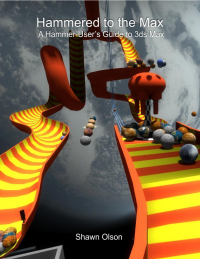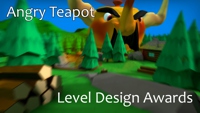Brush Geometry
The Wall Worm VMF Exporter handles the export of brush geometry (also known as world geometry) differently than in Hammer. Hammer only creates brushes; for the Wall Worm, that is not true. Because you can make models and other objects in 3ds Max, you have to tell Wall Worm what objects are part of the World Brush Geometry.
Some things are important. Not all objects are valid brushes. To be a valid brush, your object must follow these rules:
- Geometry must be Convex*
- Each polygon must be Planar
- There can be no Co-Planar polygons
* The entire object can be concave if you've tagged an object as a concave brush. In that case, the rules above are applied per Element sub-object.
Tagging as World Geometry
- Select your brush(es)
- Click Wall Worm > Wall Worm Level Design > Set Selection as Brush Geometry
Concave Brushes
If your brush is composed of multiple elements where each element should be an individual brush, then tag it as a Concave Brush.
- Select your brush(es)
- Click Wall Worm > Wall Worm Level Design > Set as Concave Brush
Removing a Brush Tag
- Select your brush(es)
- Click Wall Worm > Wall Worm Level Design > Remove Selection from Brush Geometry
All of the methods above can be bound to a keyboard shortcut via that Customize > Customize User Interface menu. All Wall Worm functions are in the wallworm.com category.
Automatic Brushes
There are a few types of geometry that do not need to be tagged as brushes. Those types are listed below:
* Wall Primitives are native in 3ds Max. The other three primitives are WW Plugins that come with Wall Worm. Although these primitives will atuomatically export as brushes, you can exclude any by using the Remove Selection From Brush Geometry function.
Brush By Layer
Also, all geometry in layers called "Convexity Walls" and "Convexity Floors" are assumed to be convex geometry that will export as brush geometry.
Using Brush Mode
Brush Mode is a new feature in Wall Worm that helps you optimize the process of making brush geometry. When Brush Mode is on, each newly created object you make is automatically tagged as a brush. Also, each newly created geometry will be assigned the currently active material in the material editor.
You can turn on Brush Mode under Wall Worm > Wall Worm Level Design > Brush Mode or in the Tags tab of Anvil.
- Please be careful in brush mode not to create objects that are invalid as brushes.
- Even convex shapes can be invalid if they contain coplanar faces. An example of this is the Pyramid primitive (the bottom has four coplanar faces) or a Box primitive with multiple height/width/length segments (where each side had multiple polygons on the side). For things like Box, simply make sure that all height, width and length segments are set to 1. For things like the pyramid, you'll have to either manually edit the bottom to have one polygon, turn it into a model (with WWMT) or create a custom pyramid primitve.
Latest Articles
Nudge Tools
Nudge Tools in Wall Worm
VBSP.exe has stopped working
VBSP can crash if there are no entities or world geometry in your scene.





